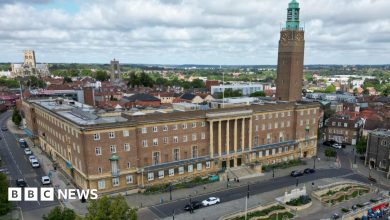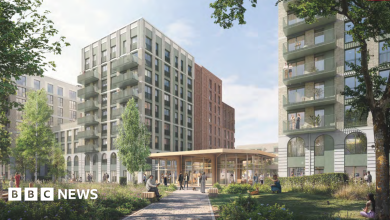Rackheath locals fear ‘horrendous’ traffic due to new homes

The Rackheath Development: A Community at a Crossroads
The proposed development on the grounds of a former US airbase near Rackheath has sparked considerable discussion among local residents. Currently serving as agricultural land, the ambitious project would effectively create a bridge between Rackheath and the neighboring village of Salhouse, fundamentally altering the landscape of this quiet corner of the countryside. The plans include not just housing, but comprehensive community infrastructure: two primary schools, a secondary school, orchards, allotments, and various sports facilities. This holistic approach suggests developers are aiming to create not just homes, but a self-contained community with amenities designed to support daily life for new residents.
Local business owner Ms. Lincoln captures the mixed feelings prevalent in the community: “It is going to be busy. Traffic is going to be horrendous, but it is going to be good for business.” Her perspective reflects the complex reality facing many rural and semi-rural communities when significant development projects are proposed. On one hand, the increased population will likely bring economic benefits to local businesses that have perhaps struggled with limited customer bases. The influx of new families could revitalize the area economically, creating opportunities for existing businesses to expand and new enterprises to emerge. Local shops, services, and eateries stand to benefit from the increased foot traffic and broader customer base.
However, Ms. Lincoln’s concerns about traffic congestion highlight the infrastructure challenges that often accompany large-scale developments. The existing road networks in and around Rackheath and Salhouse were designed for much smaller communities, and the sudden addition of potentially thousands of new residents could overwhelm these systems. Traffic congestion isn’t merely an inconvenience; it affects quality of life, creates safety concerns, and impacts the environment through increased pollution. The development’s success will largely depend on how effectively planners address these infrastructure needs, potentially including road improvements, public transportation options, and thoughtful traffic management strategies.
The transformation of agricultural land into a residential and community space also raises questions about environmental impact and food security. While the inclusion of orchards and allotments in the development plan shows some commitment to preserving green spaces and opportunities for local food production, the net loss of agricultural land is significant. This reflects a broader national tension between the urgent need for housing and the importance of preserving farmland. The former airbase has, over decades, been reclaimed by nature and agriculture—creating a unique landscape with both historical significance and current practical use. Its conversion marks another chapter in the land’s evolving story, from military use to agriculture and now to residential development.
The educational facilities planned—two primary schools and a secondary school—indicate the developers’ expectation that the community will attract families with children of various ages. Schools often become the heart of new communities, serving as gathering places and creating bonds between residents. The inclusion of sports facilities further supports this community-building aspect, providing spaces for recreation, team activities, and social interaction. These elements suggest an attempt to create a development with a sense of place and community identity, rather than simply constructing housing without supporting infrastructure.
As the proposal moves through the approval process, the community faces important questions about its future identity. Will this development successfully integrate with existing communities, or will it create a sense of division between new and long-established residents? Can the economic benefits Ms. Lincoln anticipates be realized while mitigating the traffic and infrastructure challenges she fears? The answers will depend not only on the quality of the development plan itself but on the ongoing engagement between developers, local authorities, and the community. What’s clear is that the proposed development represents more than just new buildings—it symbolizes a potential transformation of daily life for everyone in the area, bringing both opportunities and challenges that will reshape this corner of the countryside for generations to come.









qlb1ec